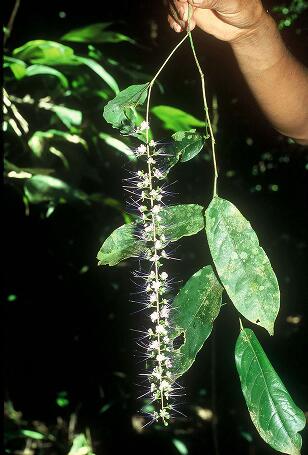Family: Chrysobalanaceae

Kingdom: Plantae Rank: Family Parent: Malpighiales Status: Valid
Common Names:
- Chrysobalanaceae - English, United States of America
Vegetative Morphology
Habit: Trees or shrubs.
Main axis: Inner bark with a sandy texture.
Leaves: Leaves simple, alternate, the lamina margins entire.
Stipules: Stipules small and inconspicuous or large and persistent.
Reproductive Morphology
Inflorescence: Inflorescence a raceme, panicle, or cyme, the flowers often subtended by bracts.
Flowers: Flowers bisexual, actinomorphic to zygomorphic, perigynous; hypanthium short to elongate; nectary disk present as a lining of the hypanthium; calyx lobes 5, imbricate; petals 5, imbricate, caducous; stamens 3 to numerous, inserted on margins or surface of nectary disk or adnate to disk, free or connate at base, sometimes exerted; ovary superior, carpel one, 1-2-locular, the style filiform, gynobasic arising from receptacle at base of ovary, the stigma somewhat 3-lobed.
Fruit: Fruit a drupe, dry or fleshy, often pubescent inside.
Seeds: Seeds one per fruit, erect.